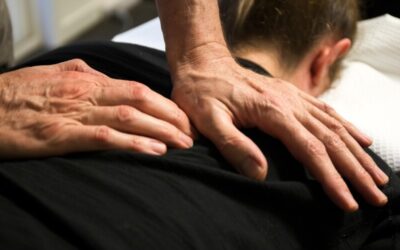Tennis elbow is a common condition that affects not just athletes but anyone who engages in repetitive arm and wrist activities.
Despite its name, you don’t need to play tennis to suffer from it. This condition, medically known as Lateral Epicondylalgia, results from overuse of the forearm’s muscles, leading to pain and tenderness on the outside of the elbow.
It’s crucial to understand both what causes this pain and the most effective ways to alleviate it, ensuring a swift return to daily activities or sports without discomfort.
What Does Tennis Elbow Feel Like?
For those wondering what tennis elbow feels like, it often starts as a mild discomfort and can escalate to a severe, debilitating pain on the outside of the elbow. This pain typically worsens when performing activities that involve gripping or lifting.
It’s not just the pain; the condition can significantly limit functionality, making everyday tasks challenging and affecting quality of life. Understanding these symptoms is the first step towards seeking appropriate treatment and relief.
Tennis Elbow: What’s The Cause?
Understanding the symptoms and obtaining a diagnosis for tennis elbow is a crucial step towards recovery. This condition is marked by specific signs that, when recognised early, can significantly improve the effectiveness of treatment strategies. Symptoms of tennis elbow include:
- Pain and tenderness on the outside of the elbow, potentially spreading into the forearm and wrist;
- Increased discomfort with activities that involve forearm usage, such as turning a doorknob, shaking hands, or lifting objects.
Diagnosis primarily involves a comprehensive physical examination. A healthcare professional will assess the pain in the elbow area by conducting various tests.
These may include asking the patient to flex their arm, wrist, and fingers to pinpoint the source of discomfort. This hands-on approach helps in accurately identifying tennis elbow and differentiating it from other potential conditions.
Tennis Elbow: How To Relieve The Pain?
Relieving the pain of tennis elbow involves a combination of rest, ice, medication, and physiotherapy. Initially, it’s crucial to rest the affected arm and avoid activities that exacerbate the pain. Applying ice and using anti-inflammatory medications can help reduce swelling and manage pain. Physiotherapy plays a critical role in rehabilitation, focusing on exercises that strengthen the forearm muscles and improve flexibility.
Rest And Medications
Taking a break from activities that aggravate tennis elbow is essential for recovery. Over-the-counter pain relievers, like ibuprofen or naproxen, can also help manage inflammation and pain during the healing process.
Ice
Applying ice packs to the elbow for 15-20 minutes several times a day can significantly reduce inflammation and alleviate pain. This simple, effective treatment is best used in the early stages of tennis elbow.
Physiotherapy Treatment
Physiotherapy for tennis elbow focuses on exercises that strengthen the forearm muscles and improve grip strength. Treatment may also include techniques like soft tissue massage, joint mobilisation, and the use of braces or taping to support the elbow.
Risk Factors
Understanding risk factors is crucial in preventing tennis elbow. Activities that involve repetitive arm motions or heavy lifting can increase the risk. Age also plays a role; individuals between 30 and 50 years old are more likely to develop the condition.
How Can We Help You?
If you’re suffering from tennis elbow, seeking professional help is vital. A physiotherapist at Mid North Coast Allied Health can assess your condition, confirm the diagnosis, and tailor a treatment plan suited to your needs.
Early intervention is key to a speedy recovery, preventing the condition from becoming a chronic issue. Worried that you have or are developing tennis elbow? Arrange a consultation to be seen as soon as possible.
What is Exercise Physiology? All You Need to Know
Join us as we delve deep into the world of exercise physiology, unravelling how our bodies respond and adapt to physical activity and the science behind these changes. We will introduce you to the expertise of exercise physiologists who craft personalised exercise...
What is Remedial Massage and How Can It Benefit You?
What is remedial massage? Remedial massage is a holistic approach to healthcare that helps to alleviate pain and discomfort in the body. This type of massage therapy involves using specific techniques that target the root cause of the problem, rather than just...
Embrace the Great Outdoors: 5 Steps to Prepare for ‘Take a Hike Day’
Are you ready to lace up your hiking boots and hit the trails? 'Take a Hike Day' is just around the corner on the 17th of November, and it's the perfect opportunity to reconnect with nature, get some exercise, and clear your mind. We, at Mid North Coast Allied Health,...



